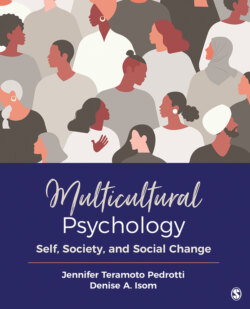Читать книгу Multicultural Psychology - Jennifer T. Pedrotti - Страница 57
На сайте Литреса книга снята с продажи.
Worldview Related to Gender Identity
ОглавлениеI know that as a woman, I make many choices in my day that focus on making sure that I am safe in my day-to-day routine. For example, it’s important to me to be able to get some exercise each week, and my favorite way to do this is to take a run outside. There are a lot of great trails in my area, but because of my work schedule I usually need to be working out pretty early in the morning, and there aren’t very many people out at that time. As a young woman, I don’t feel comfortable being all alone on my own out there, just in case someone with bad intentions was out there too, so I paid to join a gym instead. Another example is after work. Sometimes I’ll have to park pretty far away from my office downtown, and so on those days I know I need to leave before it gets dark, because my office isn’t in a very well-lit area. It’s frustrating sometimes to have to stop working on something because of that—I’d rather stay and get my work done, but I know I’m taking a risk walking by myself as a woman after dark. Sometimes when I think of all the changes I make in my daily life just to keep myself safe from risk of sexual assault, it boggles my mind. I know my male friends don’t worry so much about physical safety.
—Janie, age 28
Gender is one identity facet that shapes our worldview. In the vignette above, it’s easy to see that Janie’s worldview includes the idea that because of her gender, she might not be safe physically from sexual assault. Many women might make changes in their daily schedule, plans to walk together after dark to avoid being caught alone, or other changes to their daily schedules because they perceive the world as less safe through their lens as a woman. In large-scale studies conducted within the United States, stark differences are often found in many everyday practices of women and transgender individuals as compared to those of male identified individuals. Gallup polls regularly find that women worry more than men about sexual assault, with 36% of female participants in 2018 reporting “frequent or occasional worry about sexual assault” in comparison to just 4% of men surveyed responding in this way (McCarthy, 2018). In another study, 50% of men in the study stated that they “do not worry about safety” as compared with only 26.9% of women (Logan & Walker, 2017). Transgender individuals are also at risk in terms of safety, with one in four trans individuals reporting being assaulted because of their gender identity (James et al., 2016).
In addition to safety, gender identity may also impact other pieces of worldview. Gender may impact the amount of choices one sees available in terms of career, for example. In our current workplace landscape, only 5% of CEOs on the 2018 Fortune 500 list in the United States are female, and zero are transgender. Seeing so few examples of themselves in these types of high-power occupations may cause young girls to rule out positions such as these (Rios, Stewart, & Winter, 2010).
